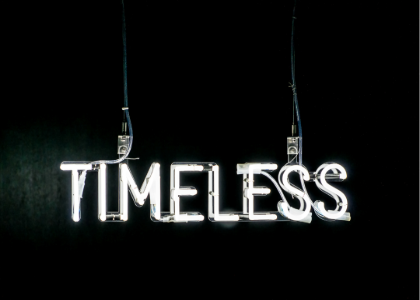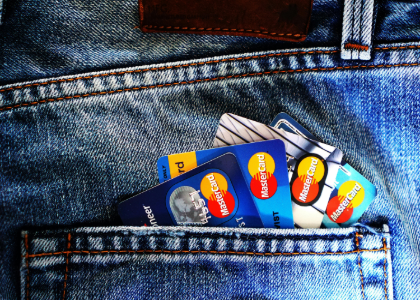Blog

How Packaging Can Become a Powerful Marketing Tool
In today's competitive marketplace, brands always look for innovative ways to stand out and make a lasting impression. One often overlooked but incredibly powerful marketing tool is packaging. From the moment a consumer looks at a product, the packaging becomes their first point of contact with the brand. It can evoke emotions, create a sense of anticipation, and communicate the brand's message and values.
When done right, packaging can become a silent salesperson, enticing consumers to choose one product over another. It can convey quality, durability, and even a sense of luxury. Effective packaging goes beyond just protecting the product; it becomes an extension of the brand, telling a story and forging a connection.
Let’s address the elephant in the room. Is Packaging the necessary evil in today’s world?
Packaging has become an integral part of our modern consumer-driven society. It serves multiple purposes, such as protecting products during transportation, providing information to consumers, and enhancing the shopping experience. However, packaging has negative consequences, such as generating waste and contributing to environmental pollution. Therefore, it can be seen as a necessary evil, as it fulfills important functions but also has drawbacks. The challenge lies in finding ways to minimise the negative impacts of packaging without compromising its utility. This involves adopting sustainable packaging practices, promoting recycling, and encouraging responsible consumer behaviour.
How packaging influences consumer perception
Packaging has a significant impact on consumer perception. Research shows that consumers often associate a product's quality and value with its packaging quality. A well-packaged product is perceived as more premium and trustworthy, while poorly designed or cheap packaging can give the impression of low quality.
Additionally, packaging can evoke emotions and create a sense of anticipation. Think about the excitement you feel when unwrapping a beautifully packaged gift. The same principle applies to product packaging. By creating an enjoyable unboxing experience, brands can enhance the perceived value of their products and foster a positive emotional connection with consumers.
The importance of packaging in marketing
Packaging plays a crucial role in marketing for several reasons. Firstly, it serves as a visual representation of the brand and its values. A well-designed package can communicate the brand's essence and create a memorable consumer experience. It can also differentiate a product from its competitors and attract attention on crowded store shelves.
Furthermore, packaging allows brands to showcase their creativity and innovation. Unique and eye-catching packaging can pique consumers' curiosity and make them more likely to try a product. Packaging can reinforce a brand's positioning by reflecting its personality and target audience.
Packaging as a branding tool
Packaging is not just a means to deliver a product; it is a powerful branding tool. It can reinforce brand recognition and equity through consistent design elements like logos, fonts, and colors. When consumers see a familiar package, they associate it with the brand and its values, creating a sense of trust and familiarity.
Additionally, packaging can tell a story and create a unique brand experience. Brands can use packaging to share their origin, mission, or product inspiration. This storytelling aspect can create a deeper connection with consumers and make the brand more relatable and memorable.
The importance of a well-designed logo
Packaging design is constantly evolving, with new trends emerging each year. One current trend is minimalism, where brands opt for clean, simple designs that emphasize the product. This approach can create a sense of sophistication and modernity, appealing to consumers who value simplicity and elegance.
Choosing the right packaging and designing a captivating logo may seem like small details, but they can have a massive impact on your brand's success. Packaging is the first thing customers see when they encounter your product, and it can make or break their decision to purchase. A well-designed logo instantly recognizes and communicates your brand's values and personality. Websites like FreeLogoDesign can come in handy when planning a logo. You can create one in minutes or work with an artist to customize your brand. Logos are like a visual handshake, establishing a connection with your audience. So, invest time and effort in crafting packaging that protects your product, tells a story, and creates a memorable experience. Remember, in a world filled with choices, it's the little things that make a big difference.
Case studies of successful packaging strategies
Several brands have successfully leveraged packaging as a powerful marketing tool. One notable example is Coca-Cola's "Share a Coke" campaign, where the brand replaced its logo with popular names on its packaging. This personalized approach created a sense of connection and encouraged consumers to share their Coca-Cola experiences on social media, generating buzz and boosting sales.
Apple's iconic logo and packaging are a symphony of minimalism and elegance. The sleek design and the striking Apple logo create an unforgettable experience. It's a harmonious blend of simplicity and sophistication that captures attention, represents the brand's identity, and leaves a lasting impression.
Another example is Glossier, a beauty brand known for its minimalistic and Instagram-friendly packaging. Glossier's packaging design reflects the brand's ethos of simplicity and natural beauty, resonating with its target audience of millennial consumers. The brand's packaging has become highly recognizable and has contributed to its rapid growth and cult-like following.
Product differentiation is crucial in a crowded marketplace, and packaging can significantly set a product apart from its competitors. Unique and innovative packaging designs can catch consumers' attention and make them more likely to choose one product over another. Packaging is a powerful marketing tool that should be considered. It can influence consumer perception, evoke emotions, and differentiate a brand from its competitors. By investing in thoughtful and strategic packaging design, brands can create a lasting impression and forge a strong connection with consumers.
From incorporating color psychology to embracing sustainability and creating memorable unboxing experiences, the possibilities for leveraging packaging in marketing are endless. Whether you are a small business owner or a marketing professional, it's essential to recognize the potential of packaging as a silent salesperson and harness its power to enhance your brand's impact. So, next time you design a product package, remember that it's not just a box; it's an opportunity to create a remarkable brand experience.
More tips and tricks on the blog


